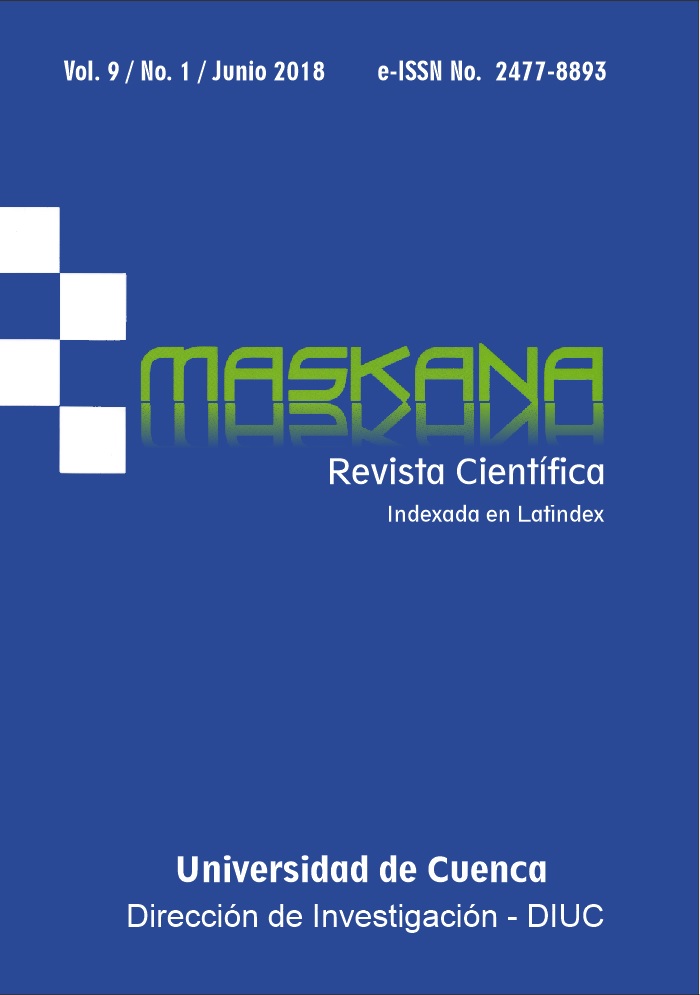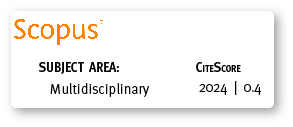La relación del logro de la lectura con la lateralidad, el movimiento ocular sacádico y el color en los niños
DOI:
https://doi.org/10.18537/mskn.09.01.02Palabras clave:
lateralidad, síndrome Irlen, prueba de color K-D, movimientos oculares sacádicosResumen
Varios autores consideran a la lectura como una actividad de suma importancia en la vida académica, profesional y personal de un ser humano. Leemos de todo, para nosotros mismos y para todos, sin embargo, los procesos perceptivos, la lateralización hemisférica, la visión y conciencia fonológica son factores intervinientes en la destreza de la lectura que pueden influir en la forma de adquisición del aprendizaje de la misma. El objetivo principal de este estudio fue evaluar el efecto que produce el uso de las láminas de color Irlen® en la calidad del seguimiento ocular durante la lectura y la posible relación con la lateralidad. Los participantes fueron cincuenta y tres (53) escolares de entre 6 y 7 años, 32 con estrés visual y 21 del grupo de referencia, a los cuales se les hizo exámenes visuales estandarizados, pruebas de ceguera al color con el test Ishihara, la madurez neuropsicológica a través del test CUMANES, síndrome Irlen o estrés visual con EPLI1 y los movimientos oculares con la prueba K-D2. El análisis estadístico muestra que la lateralidad no está relacionada con la capacidad lectora; existe mejorías significativas en el proceso perceptivo para la lectura con el uso del color; sin embargo, no se encontraron valores representativos para la comprensión y número de palabras por minuto. Hay diferencias significativas en la capacidad lectora entre niños con Irlen y niños sin Irlen, y se sugiere nuevos estudios que consideren habilidades atencionales, conciencia fonológica y memoria verbal en la lectura.
Descargas
Métricas
Citas
Artigas-Pallarés, J. (2009). Dyslexia: a disease, a disorder or something else? Revista de Neurología, 48(Suppl 2), S63-9.
American Psychiatric Association. (2013). Diagnostic and statistical manual of mental disorders: DSM-5 (5th ed.). Arlington, VA: American Psychiatric Association.
Barrero, M., Vergara, E., Martín-Lobo, M. P. (2015). Avances neuropsicológicos para el aprendizaje matemático en educación infantil: la importancia de la lateralidad y los patrones básicos del movimiento. Edma 0-6: Educación Matemática en la Infancia, ISSN-e 2254-8351, 4(2), 22-31.
Bernal, M. (2015a). Dislexia, déficit de atención/hiperactividad o Síndrome Irlen. Maskana, 6(2), 109-119.
Bernal, M. (2015b). Prevalencia del síndrome Meares-Irlen/Estrés Visual que afecta la lectura en niños de tercer grado. Maskana, 6(1), 19-25.
Caicedo, H. (2012). Neuroaprendizaje: Una propuesta educativa (2ª ed.). Bogota D.C., Colombia: Ediciones de la U, 206 p.
Chase, C., Ashourzadeh, A., Kelly, C., Monfette, S., Kinsey, K. (2003). Can the magnocellular pathway read? Evidence from studies of color. Vision Research, 43(10), 1211-1222. https://doi.org/10.1016/S0042-6989(03)00085-3
Chouinard, B. D., Zhou, C. I., Hrybouski, S., Kim, E. S., Cummine, J. (2012). A functional neuroimaging case study of Meares-Irlen syndrome/visual stress (MISViS). Brain Topography, 25(3), 293-307. https://doi.org/10.1007/s10548-011-0212-z
Dodick, D., Starling, A. J., Wethe, J., Pang, Y., Messner, L. V, Smith, C., Master, C. L., Halker-Singh, R. B., Vargas, B. B., Bogle, J. M., Mandrekar, J., Talabar, A., Leong, D. (2017). The effect of in school saccadic training on reading fluency and comprehension in first and second grade students: A randomized controlled trial. Journal of child neurology, 32(1), 104-111. https://doi.org/10.1177/0883073816668704
Galetta, K. M., Brandes, L. E., Maki, K., Dziemianowicz, M. S., Laudano, E., Allen, M., Lawler, K., Sennett, B., Wiebe, D., Devick, S., Messner, L. V., Galetta, S. L., Balcer, L. J. (2011). The King-Devick test and sports-related concussion: Study of a rapid visual screening tool in a collegiate cohort. Journal of the Neurological Sciences, 309(1-2), 34-39. https://doi.org/10.1016/j.jns.2011.07.039
Irlen, H. (2005) Reading by the colors: Overcoming dyslexia and other reading disabilities through the Irlen method. A Perigee Book. New York, USA: Penguin Group (USA) Inc., 211 p.
Leong, D. F., Master, C. L., Messner, L. V, Pang, Y., Smith, C., Starling, A. J. (2014). The Effect of Saccadic Training on Early Reading Fluency. Clinical pediatrics, 53(9), 858-64. https://doi.org/10.1177/0009922814532520
López-Escribano, C. (2007). Contributions of neuroscience to the diagnosis and educational treatment of developmental dyslexia . Revista de Neurología, 44(3), 173-180.
Mayolas, C., Aparicio, V., Masia, J. J. R., Pi, M., Aparicio, A., Masia, J. J. R. (2010). Relación entre la lateralidad y los aprendizajes escolares. Apunts. Educació Física i, 101(1577-4015), 32-42.
Montalvo, J. (2014). Estimulación de los centros cerebrales del habla y el lenguaje en adquisición de lectoescritura en niños de 4 a 6 años. Maskana, 5(2), 29-40.
Nandakumar, K., Leat, S. J. (2008). Dyslexia: A review of two theories. Clinical and Experimental Optometry, 91(4), 333-40. doi: 10.1111/j.1444-0938.2008.00277.x
Portellano, J. A. (2004). La dislexia: en todas las edades. A distancia, 2, 81-85.
Portellano, J. A., Mateos, R., Martinez Arias, R. (2012). CUMANES Cuestionario de madurez neuropsicológica escolar. España: TEA Ediciones, 30 p.
Ramus, F., Rosen, S., Dakin, S. C., Day, B. L., Castellote, J. M., White, S., Frith, U. (2003). Theories of developmental dyslexia: Insights from a multiple case study of dyslexic adults. Brain, 126(4), 841-865. https://doi.org/10.1093/brain/awg076
Rosselli, M., Matute, E., Ardila, A. (2006). Neuropsychological predictors of reading ability in Spanish. Revista de Neurología, 42(4), 202-210.
Shaywitz, S. E., Shaywitz, B. A. (2005). Dyslexia (Specific Reading Disability). Biological Psychiatry, 57(11), 1301-1309. https://doi.org/10.1016/j.biopsych.2005.01.043
Tacuri, R. D. (2017). La lateralidad y los efectos del color sobre la lectura y los movimientos sacádicos. La Rioja, España: Universidad Nacional de La Rioja.
Toro, R. J., Yepes, L. E. (2004). Fundamentos de Medicina, Psiquiatria. (J. E. Téllez-Vargas, Ed.) (4.a ed.). Medellin, Colombia: CIB (Corporacion para Investigaciones Biologicas)., 463 p.
Descargas
Publicado
Cómo citar
Número
Sección
Licencia
Copyright © Autors. Creative Commons Attribution 4.0 License para cualquier artículo enviado a partir del 6 de junio de 2017. Para los manuscritos presentados anteriormente, se utilizó la licencia CC BY 3.0.
![]()
Usted es libre de:
 |
Compartir — compartir y redistribuir el material publicado en cualquier medio o formato. |
 |
Adaptar — combinar, transformar y construir sobre el material para cualquier propósito, incluso comercialmente. |
Bajo las siguientes condiciones:
 |
Atribución — Debe otorgar el crédito correspondiente, proporcionar un enlace a la licencia e indicar si se realizaron cambios. Puede hacerlo de cualquier manera razonable, pero de ninguna manera que sugiera que el licenciador lo respalda a usted o a su uso. |
| Sin restricciones adicionales: no puede aplicar términos legales o medidas tecnológicas que restrinjan legalmente a otros a hacer cualquier cosa que permita la licencia. |
Mayor información sobre este acuerdo de autoría y licencia, transferencia de derechos o solicitudes de reproducción, pueden ser consultados en este enlace.









